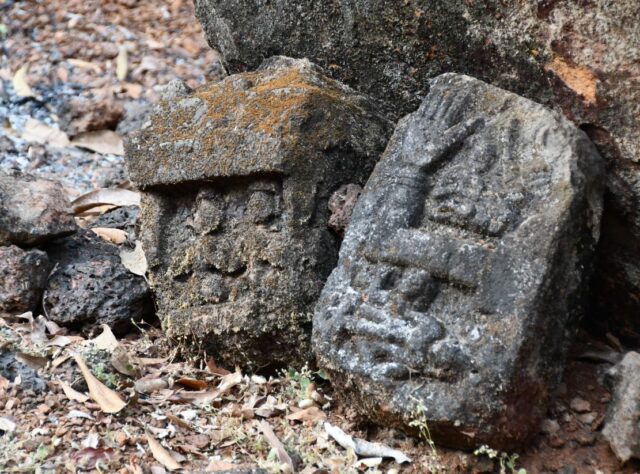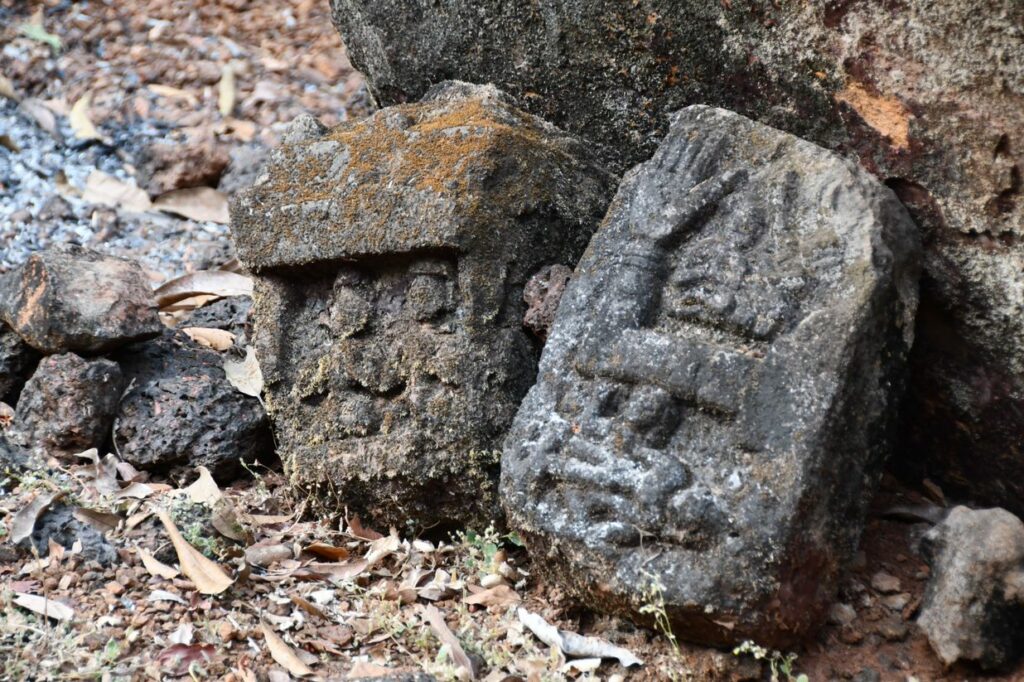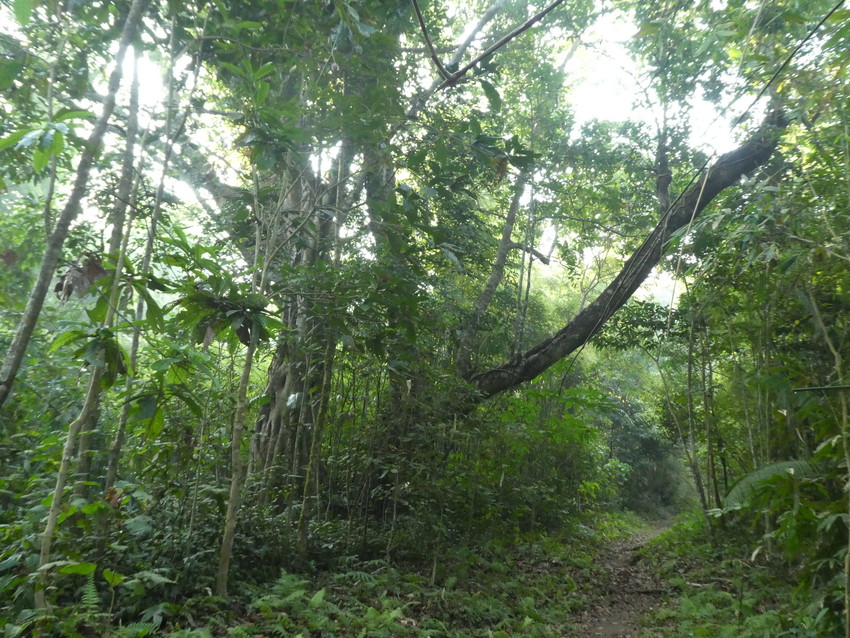
Carved stones near the sacred grove at Mandangad. Credit: Richard Cuthbert/WLT
Each one of the 13,000 sacred groves in India’s Northwestern Ghats region tells a story of evolution, both in culture and ecology. This is what WLT-partner Applied Environmental Research Foundation (AERF) communicate in their newly published book: Sacred Groves of Ratnagiri.
The sacred groves of the northwestern Ghats (Ghat being a local term for mountain) traverse the entire western coast of India. These woody patches are the final remains of the climax forests in the region and are vital repositories of forest biodiversity.

Sacred Groves of Ratnagiri (Volume 1). AERF, 2023
A tapestry of culture and biodiversity
The book displays the vast array of endemic species vital to the forests’ survival. In many ways, the groves are a tapestry of habitats, woven together over thousands of years. Species such as the Great Hornbill (Buceros bicornis) are integral to the survival of the forest. A ‘forest farmer’ the bird does a great job of dispersing seeds across the forest landscape. Elsewhere these animals lack nesting spaces because they struggle to find trees and canopies large or suitable enough.

A Great Hornbill (Buceros bicornis) perches proudly on a tree branch in the Western Ghats. The females build nests in hollows of large tree trunks. Credit: Archana/AERF
In fact, species across all taxa, including plants, insects, butterflies, amphibians, reptiles, and mammals find sanctuary here. It is no wonder then that the groves form one of the world’s 34 global Biodiversity Hotspots.

One of the many rare orchid species in a sacred grove in India’s Western Ghats. Credit: Richard Cuthbert/WLT
The stories around how sacred groves first came into being lies in the social histories of these treescapes.
Nature worship has been central to the belief systems of the indigenous and local communities living in the Western Ghats. The elephant, tiger, and cobra for example are worshipped in the Hindu religion. In the name of these local deities – and others – patches of forests were afforded protection. It is these patches that became known as sacred groves.
Humans built temples in these groves. Here, decisions about how local natural resources were to be used and distributed were made. Lively festivals and celebrations also happened within their walls, some of which continue today.

Carved stones near the sacred grove at Mandangad. Credit: Richard Cuthbert/WLT
A harbour of rare species
These cultural traditions explain why the groves continue to harbour rare and endemic species, including many IUCN Red List tree species. But whilst their extent is remarkable, their permanency is threatened.
Demand for cultivable land alongside the advent of the market economy, road building, and religious tourism puts them at risk of deforestation. In the relatively recent past, British colonial rule changed land use somewhat in these forests. Today, trees are felled to give way to progressively larger temples. On top of this, belief systems and traditional knowledge attached to the groves are in decline.

A Brown Fish Owl (Ketupa zeylonensis) is one of the resident species of India’s Western Ghats. Credit: Richard Cuthbert/WLT
A story of ecological revival
AERF therefore chose to focus their conservation efforts on these places. Since 1995, the organisation has dedicated itself to the conservation and revival of these habitats. Local communities have made this work possible, and the knowledge exchanges around the ecology of these groves has really aided the project’s success. The book highlights 261 sacred groves, explaining the conservation status of each grove, a detailed profile of the species it hosts, its cultural significance, and the work being done by AERF to tackle threats it faces.
WLT has stood alongside AERF in its mission to protect these precious sites, and to secure their future. The vignettes of the sacred groves offered in this book open a window for people to learn about these fascinating landscapes of global natural heritage.

Dense old growth forest; typical of India’s sacred groves. Credit: Richard Cuthbert/WLT


